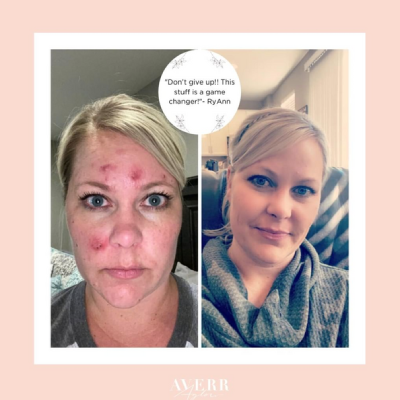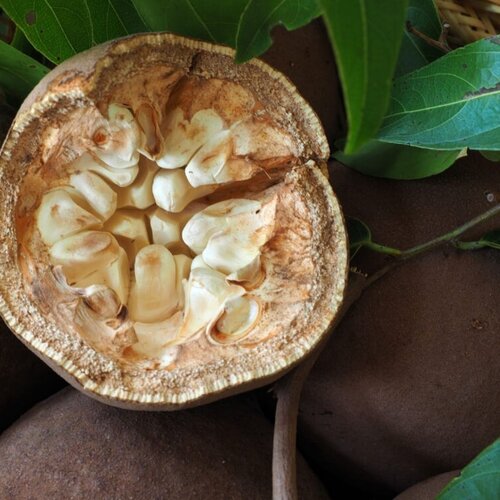
How to Shrink a Cystic Pimple: 9 Steps to Tame Deep Breakouts
It always happens, without fail.
You have an important event, and you want to look your best. So, naturally, this is when your cystic acne decides to throw an absolute tantrum.
What do they call that? Murphy’s Law?
Well, Murphy sounds like a jerk.
Forget feeling elegant for that interview, first date, or wedding. Don’t plan on a fresh face for that beach trip, photoshoot, or baby shower.
You are now in crisis management mode, complete with twelve layers of makeup, desperate to disguise the cysts erupting beneath your skin.
The worst part? You’re so self-conscious about your breakout that you can barely enjoy the big event you’ve been waiting for!
Super disappointing.
But what other choice do you have? Cystic acne is incredibly stubborn. Watching your breakouts heal ever-so-slowly is just a waiting game, isn’t it?
Yes and no. You’re right that cystic acne is tricky and requires patience. But you can do more than passively sit and take it!
When you feel trouble brewing beneath your skin, fight back with these 9 steps to nip cystic acne in the bud.
1. Begin treatment ASAP
Take proactive measures to treat cystic acne in its earliest stages.
Starting your acne-fighting campaign ASAP can lessen the length and severity of your breakout. Begin treatments as soon as you notice a cyst forming, and you can cut days or even weeks off of its lifespan!
2. Skip the OTCs
The terror of a cystic breakout can send you scurrying for the nearest solution, including old drugstore standbys.
Unfortunately, most over-the-counter acne products are targeted at surface-level breakouts, not at the deep-dwelling issues that fuel cystic acne.
So don’t bother unearthing that half-used bottle of OTC acne wash from the back of your bathroom cabinet. Even if you start washing with it eight times a day, the active ingredients won’t penetrate far enough into your skin to make much of a difference.
3. Resist the Urge to Pop Your Pimple
DON’T YOU DARE?
Seriously, though. Popping pimples is risky and ill-advised at the best of times, but cystic breakouts are on a whole different level.
Because cysts form so deep within the layers of your skin, they are nearly impossible to drain by squeezing. One of the hallmark traits of a cyst is a thick lining that makes it even more resistant to your pimple-pinching efforts.
Attempting to pop a cyst is much more likely to result in scarring than relief, your poor epidermis ravaged by all the fruitless poking and prodding. Not to mention the possibility of bursting the cyst beneath your skin, letting all that infected grossness spread and multiply.
HARD PASS.
4. Cleanse Away Dirt and Bacteria GENTLY
While your new cystic breakout is still forming, sabotage its progress by removing contributing factors from your skin.
Use a sensitive-skin face wash to target bacteria and pore-cloggers like dirt and dead skin cells. Clearing these impurities can help undercut your acne’s severity.
Sure, your breakout has already started, but you want to prevent more clogs and bacteria from making it worse! The last thing you need right now is more blemishes jumping onto this breakout bandwagon.
Just don’t go overboard with harsh synthetic cleansers, which may cause dryness and irritation. (We see you, chemical-heavy drugstore brands!)
Instead, focus on skincare that clarifies and nourishes your skin without stripping away its natural moisture. Products like our Radiant Cleansing Nectar use natural botanicals to remove dirt and bacteria while maintaining a healthy, hydrated glow.

Whatever product you choose, remember to cleanse GENTLY! Don’t go in all gangbusters, scrubbing your breakout within an inch of its life. You’ll only cause yourself extra redness and irritation, which nobody wants.
5. Encourage Drainage
To hurry along the healing process of that swollen cyst, you’ll want to encourage all of its nasty gunk to drain away (and stop haunting you, already).
The most popular and long-standing way of encouraging drainage is by using a hot compress after you’ve cleansed.
Even if your breakout is too deep to drain at the surface level, heat can reduce the thickness of the liquid inside (ugh) and disperse it into your lymphatic system. It sounds kind of terrible, but your body is well-equipped to disinfect and dispose of this drainage.
First, choose what you’d like to use as your compress — something like a soft, clean washcloth, or even a green tea bag (which can also help reduce swelling, thanks to its caffeine content).
Once you have your material, soak it in warm or hot water, wringing out the excess. You can then lay the warm compress over the affected area for 5 to 10 minutes.
The heat should be noticeable, but not uncomfortable! If the compress feels too hot, wait until it cools slightly to a more bearable temperature.
Repeat up to three times a day to help shrink that stubborn cyst!
6. Calm Swelling
A lot of the discomfort and redness of a cystic pimple can be attributed to inflammation, so that’s the next issue you need to address.
Using a Cold Compress:
Once again, temperature comes to the rescue! You’ve already encouraged drainage with the hot compress. Now for the second part of this one-two punch: a cold compress.
Icing the site of your cystic breakout will help bring down the swelling, making your acne less sore and noticeable.
To safely apply a cold compress, first enclose ice in a clean cloth or ziplock bag.
(DO NOT put ice or ice packs directly on your skin! Too much cold can cause frostbite or cold-exposure hives called urticaria.)
No ice? Try a chilled green tea bag. Yep, they’re nice warm, or cold!
Once your compress is put together, lay it against your breakout in 30 to 60-second increments for up to 5 minutes. It should have a gentle numbing effect.

Using Anti-Inflammatories:
To soothe your cyst’s swelling, some sources recommend using non-steroidal anti-inflammatory drugs (NSAIDs). This includes familiar names like aspirin and ibuprofen.
These can be taken orally, as long as you have no conflicting health conditions. For example, they aren’t recommended for anyone who is pregnant or has asthma.
Others use these pills as a DIY spot treatment, combining them with water to make a paste. However, this can be overly drying and may cause new breakouts on top of your current problems.
These pastes can also make you more sensitive to UV damage, which we know is not a good thing, and they are still not suitable for pregnant women.
If you’re able to use a nice, cool compress, we’d always recommend that over anti-inflammatory drugs, however, you use them!
If you’re searching for pregnancy-safe skincare, keep reading here.
7. Spot Treatment to Detoxify and Reduce Oil
Now that your cyst has been thoroughly cleaned, drained, and soothed, you can apply a spot treatment to help detoxify your skin and balance the oil production around your breakout.
As with your cleanser, you’ll want to avoid anything that may contain irritating or dehydrating chemicals. Your skin is very delicate right now, so treat it sweetly!
Look for products that are made with gentle, natural ingredients, like our Clear Skin Elixir. It uses mineral-rich ingredients like coral and French pink clay to restore and purify acne-prone skin.
Plus, the Elixir is designed to be worn overnight, so you can let those healing ingredients sink in without drawing extra attention to your breakout. It can even be used as a full-face mask, so don’t be shy — spread the goodness!

8. Consult Your Dermatologist
Sometimes, desperate times call for desperate measures.
Maybe your cystic acne is extra stubborn and refuses to budge with at-home treatment. Or maybe you are getting married in three days, and time is of the essence.
If all else has failed, you may need to consult your dermatologist to get to the root of the problem.
Most likely, they’ll recommend office treatments like a cortisone injection or blue light therapy, to reduce inflammation and kill bacteria.
9. Don’t Lose Hope
The final and most important step in your fight against cystic acne? Don’t give up!
If you abandon your skincare routine in despair or try to take frustrated shortcuts (hey, pimple popping), it’s only going to make your breakouts worse.
We know that cystic acne can be painful, embarrassing, and deadly to your self-image. We’ve been right there with you!
Just do your best to stay patient and positive. Unfortunately, there’s no shortcut here, so remind yourself that it will take time for your skin and confidence to heal.
Be strong! We’re rooting for you!
What to Do Next? Try Averr Aglow’s Clear Skin Kit
Tired of feeling lost and confused about what you should do to get clear, smooth skin? Order the Clear Skin Kit.
The Clear Skin Kit contains products specially crafted with the perfect blend of natural ingredients that help soothe and calm red, irritated skin while also clearing up breakouts. If you struggle with sensitive acne/breakout-prone skin, hormonal acne, cystic acne, or rosacea, then you’ll be happy you found this complete routine.
Please understand, that results may vary, we’re not selling you a miracle product and would never try to position or state that you will get a true result in only a few days. In our clinical trials, most users found the most results at the 30-day and then the 56-day mark by sticking with our routine.
What is Averr Aglow®?
Averr means Truth. We have pioneered a revolutionary no-rinse cleansing routine specifically tailored to address problematic skin issues.
Hi, I’m Camille, founder of Averr Aglow, and I help adult women who are battling breakouts and acne get clear skin results like they have never seen before, even if nothing has worked for them in the past.
After battling breakouts for over 16 years, trying every skincare product under the sun, and visiting countless professionals like dermatologists, nutritionists, and hormonal doctors, I finally learned why nothing seemed to work on clearing up my skin, what truly causes breakouts and acne, and EXACTLY what to do to get clear skin results – and I want to help you do the same.
Let me help you! Read my full testimonial here.






